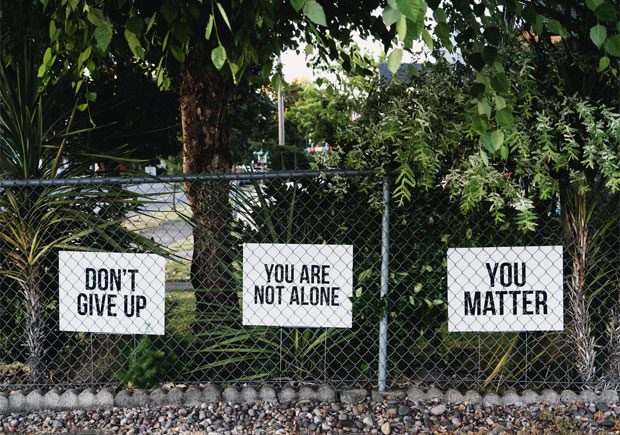What is Dialectical Behavior Therapy?
What is Dialectical Behavior Therapy?
Dialectical behavior therapy, also known as DBT therapy, helps clients figure out innovative ways to handle distressing feelings, preventing conflict in their daily relationships. The goals of DBT focus on offering therapeutic help in four skills, or categories. Those four categories include mindfulness, distress tolerance, emotion regulation, and interpersonal effectiveness.
The Four Categories of DBT
To further understand the four categories of DBT, we’ve broken them down in a bit more detail below.
- Mindfulness, the first category of DBT, tries to help a person to accept what is going on and remain consciously aware in the current moment.
- Distress tolerance, the second category of DBT, focuses on increasing a person’s ability to handle negative emotion rather than avoiding the feeling.
- Emotion regulation, the third category of DBT, helps teach a person how to manage distressing emotions that might derail an individual’s life.
- Interpersonal effectiveness, the fourth category of DBT, shows a person technique so that they communicate in more positive ways so that they can keep their self-esteem higher.
The History of DBT
Dr. Marsha Linehan founded DBT near the end of the 1980s. Linehan and her colleagues found that cognitive-behavioral therapy alone did not seem to affect patients that struggled with a borderline personality disorder. So, to help find a way to treat better those who have a borderline personality disorder, Linehan established the DBT treatment method.
DBT’s philosophical foundations stem from dialectics. Dialectics believes that the world is composed of opposites. People experience change when one opposing force overpowers another. Academically, most therapists call these forces thesis, antithesis, and synthesis.
Dialectics bases its theory on three concepts:
- Everything interconnects.
- Change exists as a constant, inevitable thing.
- When opposites meet, they can work cohesively to discover the truth.
The goal of DBT therapy focuses on the relationship between the patient and therapist. The patient and the therapist cohesively work together to resolve a conflict between change and self-acceptance occurring in the patient. The goal of this conflict resolution process should bring about positive changes in the patient.
Linehan’s DBT therapy also considered validation as a delicate process. In Dialectical Behavior Therapy, validation combined with a push for evolution inspires more cooperation in patients and far less distress. The therapist’s goal is to confirm the patient’s actions so that they can make sense within the patient’s mind.
When Do Therapists Use DBT?
When Linehan initially started using DBT therapy, she focused her efforts on treating people with a borderline personality disorder. However, since Linehan began DBT therapy, DBT therapy has since successfully treated several other types of problems. Those issues include bulimia, depression, bipolar disorder, binge-eating, substance abuse, and post-traumatic stress disorder. The most common among all is DBT for depression, as a majority of individuals across the US and all over the world suffer from the worst of depression-related conditions that critically affect their mental health and well being.
Teaching patients DBT skills improves their emotional regulation, allowing them to handle negative feelings better. DBT also guides them to being mindful and aware of every moment, bolstering their ability to communicate with others. All of these skills, when used correctly, can help improve a person’s quality of life.
What Can I Expect with DBT Therapy?
If you are going to DBT therapy, there are a few things that you can expect. DBT typically uses a combination of one-on-one therapy sessions as well as group work that will help you better develop your skills. Your therapist will be around to offer you guidance and help you stay motivated. That way, you’ll learn how to use your DBT skills in your daily life during your one-on-one therapy sessions. These sessions will usually last up to an hour, and you’ll meet with your therapist every one to two weeks.
In your group sessions, you’ll work with others that are practicing skill like what you are learning. The group will often share their experiences and work to give you support as you support others. Each group includes one trained therapist who typically leads the group session. These group sessions can last for up to two hours and usually meet weekly for at least six months. Some group sessions may only meet for an hour, depending on the needs of the people involved.
Your therapist will decide if you need one-on-one sessions and group therapy, or just one of these two options. Sometimes, people attend DBT therapy as individual sessions with their therapist only. It will be up to your therapist and how he or she assesses you. Then, you’ll know what paths to pursue.
How Does DBT Therapy Work?
When Linehan initially treated her patients with a borderline personality disorder, DBT seemed to help them. People with borderline personality disorder deal with very distressing negative feelings that can overwhelm them. Those feelings can then boil over into their relationships with others that they care about, including friends, family, and romantic partners. In DBT therapy, the therapist tries to prove to the patient that there can be two opposite perspectives existing at one time, helping the patient to understand balance. DBT therapy helps to get rid of the “all or nothing” way of thinking some people use. The idea behind DBT is to teach a “both-and” rather than an “either-or” outlook.
Guest Article. Contains sponsored links.









